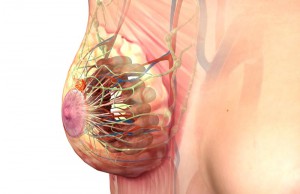Quality of Life Not Notably Improved Following Double Mastectomy

Results from a new study published in the March 7, 2016, issue of the Journal of Clinical Oncology by researchers at the Duke Cancer Institute suggest that double mastectomy does not notably improve quality of life (QOL) among women with unilateral breast cancer.
Although previous research has shown that double mastectomy does not reduce deaths among women with unilateral breast cancer, many of these women are still electing to undergo the procedure. Therefore, researchers at the Duke Cancer Institute investigated whether the decision to remove both breasts positively impacts a patient's QOL.
The study surveyed nearly 4,000 women who participated in the Army of Women, an organization committed to promoting patient engagement in breast cancer research. Using the well-validated patient-reporting tool BREAST-Q (Memorial Sloan Kettering Cancer Center, New York, NY; University of British Columbia, Vancouver, BC, Canada), the researchers measured rates of breast satisfaction and psychosocial, physical, and sexual well-being.
Their results showed that contralateral prophylactic mastectomies were associated with slightly higher rates of satisfaction in a patient's perception of how her breasts looked and felt, but this finding was primarily seen among women whose mastectomies were followed by reconstructive surgery.
Higher rates of breast satisfaction as well as psychosocial and sexual well-being were seen among women undergoing reconstructive surgery compared with contralateral prophylactic mastectomy.
Senior author Shelley Hwang, MD, chief of breast surgery at the Duke Cancer Institute, explains that the women in their study who elected to undergo contralateral prophylactic mastectomy had marginally higher rates of psychosocial wellbeing, which involved feeling confident, emotionally healthy, and experiencing acceptance of their bodies.
“But," she says, "the differences between women who did and did not get contralateral prophylactic mastectomy were very small and diminished over time.”
Hwang adds that the findings provide insights that can help guide clinical decisions at a time when contralateral prophylactic mastectomy is increasingly a choice women make, possibly out of fear that their cancer will return or for cosmetic reasons.
“The rate of contralateral prophylactic mastectomy in women undergoing mastectomy for unilateral breast cancer has increased almost sixfold from 1998 to 2011 and now approaches 11% nationally,” says Hwang.
She says the trend is predominantly driven by younger women with early stage unilateral breast cancer who have no genetic risk factors. Many of these women might be eligible for breast-conserving surgery rather than full mastectomy.
“This study supports what has concerned many of us—that women are not benefiting as greatly from contralateral prophylactic mastectomy as they expect they will,” Hwang says. “Unless a woman has a gene mutation that places her at significantly increased risk of a new cancer in the other breast, contralateral prophylactic mastectomy doesn’t prolong life. Our study shows that it doesn’t make for a notably better QOL.”
Hwang says it’s important for women to have a clear understanding of the risks and benefits of the choices they are facing.
“The key to having long-term satisfaction with treatment decisions is to review all the options and recognize the tradeoffs,” Hwang says. “We need to continue to work hard to communicate these tradeoffs accurately and effectively with our patients.”